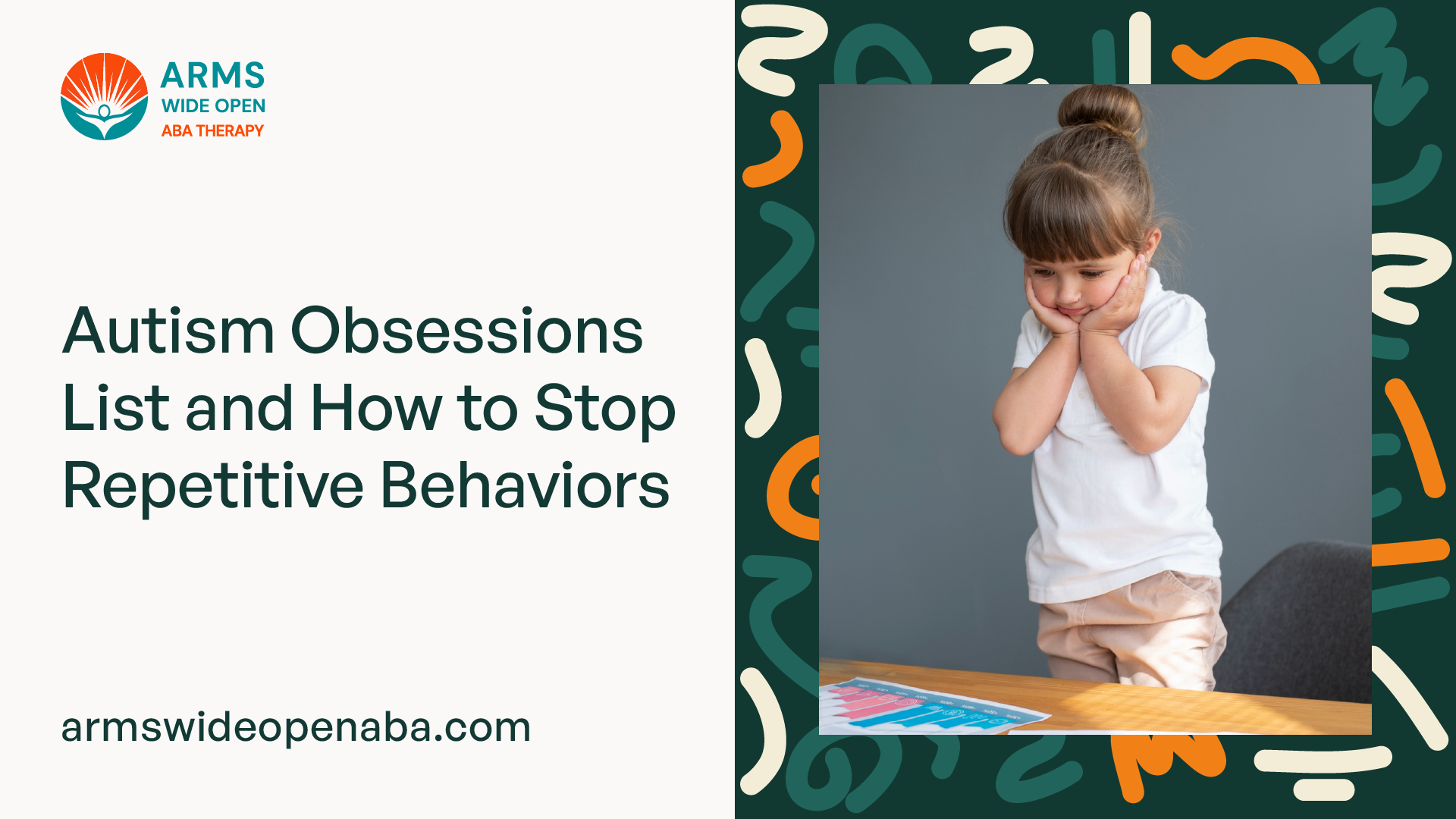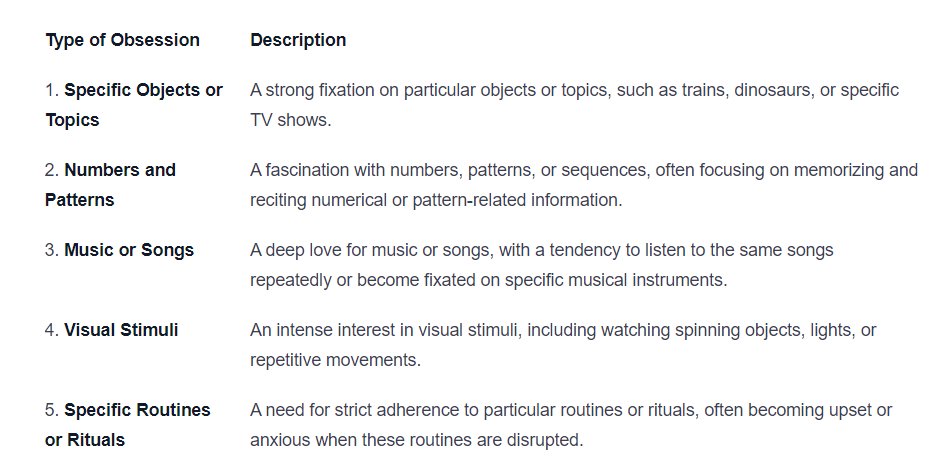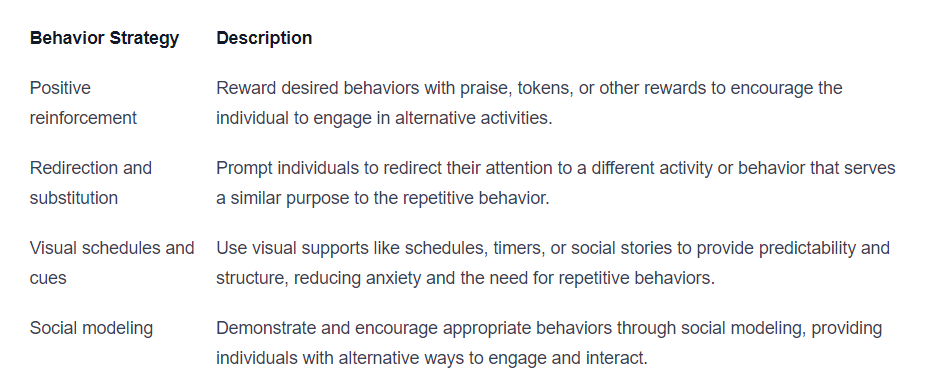Autism Obsessions List and How to Stop Repetitive Behaviors
Manage autism obsessions and reduce repetitive behaviors! Discover strategies, techniques, and professional support for finding balance.

Understanding Autism Obsessions
For individuals with autism, obsessions can play a significant role in their daily lives. Understanding these obsessions is crucial in order to provide appropriate support and interventions. In this section, we will explore what autism obsessions are and discuss some common types of obsessions frequently seen in individuals with autism.

What Are Autism Obsessions?
Autism obsessions refer to intense and focused interests that individuals with autism develop. These interests often go beyond what is considered typical or age-appropriate, and may consume a significant amount of their time and attention. Autism obsessions can be seen as a way for individuals with autism to find comfort, regulate their emotions, and make sense of their world.
It's important to note that autism obsessions are different from regular hobbies or interests. While many individuals may have passionate pursuits, autism obsessions tend to be more intense, rigid, and may interfere with daily functioning. These obsessions often involve a deep level of knowledge and an intense desire for sameness and routine.
Common Types of Autism Obsessions
Autism obsessions can vary widely from person to person. Here are some common types of obsessions frequently observed in individuals with autism:

It's important to understand that these obsessions can change over time and may vary in intensity. While obsessions can provide comfort and a sense of control for individuals with autism, they can also interfere with social interactions, learning, and everyday functioning. It is crucial to strike a balance between supporting and accommodating these obsessions while also promoting flexibility and adaptability in daily life.
By recognizing and understanding the nature of autism obsessions, we can better assist individuals with autism in managing their obsessions and finding ways to engage with their interests in a healthy and constructive manner.
Repetitive Behaviors in Autism
Repetitive behaviors are a common characteristic of autism spectrum disorder (ASD). These behaviors serve various functions and can impact individuals with autism in different ways. Understanding the role of repetitive behaviors and recognizing the examples can help in developing effective strategies to manage and support individuals with autism.
The Role of Repetitive Behaviors
Repetitive behaviors in autism serve several purposes, including self-regulation, sensory stimulation, and coping mechanisms. Individuals with autism may engage in repetitive behaviors as a way to manage their emotions, reduce anxiety, or seek sensory input. These behaviors can provide a sense of comfort and predictability in an otherwise overwhelming environment.
It's important to note that not all repetitive behaviors are harmful or disruptive. Some may be self-soothing and can help individuals with autism navigate the challenges they face. However, when these behaviors interfere with daily functioning or pose a risk to the individual's well-being, it becomes essential to address them and provide appropriate support.
Examples of Repetitive Behaviors in Autism
Repetitive behaviors in autism can manifest in various forms. Here are some common examples:

It's important to remember that every individual with autism is unique, and the presence and severity of repetitive behaviors can vary. Identifying the specific repetitive behaviors displayed by an individual with autism is crucial for designing tailored strategies to manage and support their needs effectively.
Strategies to Manage Autism Obsessions
When it comes to managing autism obsessions, implementing effective strategies can make a significant difference in promoting balance and reducing repetitive behaviors. Here are three strategies that can help individuals with autism manage their obsessions:
Establishing Predictable Routines
Establishing predictable routines can provide a sense of structure and security for individuals with autism. Consistency and predictability can help reduce anxiety and provide a framework for daily activities. By creating a schedule that incorporates the person's interests and allows for flexibility when needed, it becomes easier to manage obsessions and transition between activities.
Steps to Establish Predictable Routines
1. Create a visual schedule or use a calendar to outline daily activities.
2. Clearly communicate the schedule to the individual with autism, using visual supports or verbal cues as needed.
3. Stick to the schedule as closely as possible, but allow for minor adjustments when necessary.
4. Provide reminders and warnings before transitioning to a new activity to help prepare the individual for the change.
5. Offer praise and positive reinforcement for following the routine successfully.
Providing Alternative Outlets
Providing alternative outlets for autism obsessions can be a helpful strategy to redirect repetitive behaviors into more socially acceptable and productive activities. By channeling their intense interests and obsessions into appropriate outlets, individuals with autism can engage in activities that are enjoyable and meaningful to them.
Alternative Outlets for Autism Obsessions
1. Encourage the individual to participate in activities related to their obsessions, such as joining a club or group centered around their interest.
2. Provide opportunities for creative expression, such as art, music, or writing, that allow the individual to explore their obsessions in a constructive way.
3. Explore therapeutic options, such as occupational therapy or behavioral therapy, that can guide the individual in finding healthy outlets for their obsessions.
4. Support the individual in developing new interests and hobbies, gradually shifting their focus away from the intense obsession.
5. Ensure that the alternative outlets are accessible and appropriate for the individual's age and abilities.
Using Visual Supports
Visual supports can play a vital role in managing autism obsessions by providing structure, clarity, and communication. Visual aids can help individuals understand and follow routines, navigate transitions, and comprehend expectations, reducing anxiety and facilitating smoother interactions.
Examples of Visual Supports
1. Visual schedules or calendars that outline daily activities and routines.
2. Social stories or visual scripts that explain and illustrate expected behaviors in specific situations.
3. Visual cues, such as checklists or step-by-step guides, to assist with completing tasks or following instructions.
4. Visual timers or countdowns to indicate the duration of an activity or the time remaining until a transition.
5. Visual charts or graphs to track progress or achievements related to managing obsessions and reducing repetitive behaviors.
By implementing strategies such as establishing predictable routines, providing alternative outlets, and using visual supports, individuals with autism can effectively manage their obsessions and reduce repetitive behaviors. It is important to remember that each person is unique, and the strategies should be tailored to their specific needs and preferences. Consulting with professionals and building a support network can further enhance the effectiveness of these strategies.
Techniques to Reduce Repetitive Behaviors
For individuals with autism, managing repetitive behaviors can be a key aspect of improving their quality of life. While complete elimination of these behaviors may not always be possible, there are techniques that can help reduce their frequency and intensity. In this section, we will explore three effective strategies: engaging in sensory activities, introducing distractions and diversions, and implementing behavior strategies.
Engaging in Sensory Activities
Sensory activities can provide individuals with autism a constructive outlet for their repetitive behaviors. These activities focus on stimulating the senses in a controlled and therapeutic manner. By engaging in sensory activities, individuals can redirect their attention and find alternative ways to satisfy their sensory needs.
Here are some examples of sensory activities that can help reduce repetitive behaviors:

Introducing Distractions and Diversions
Introducing distractions and diversions can redirect an individual's attention away from their repetitive behaviors. By offering alternative activities or interests, individuals with autism can become engrossed in new experiences, thus reducing the occurrence of repetitive behaviors.
Consider incorporating the following distractions and diversions:

Implementing Behavior Strategies
Behavior strategies can be effective in reducing repetitive behaviors by providing individuals with autism with structure and guidance. These strategies focus on promoting positive behaviors while discouraging repetitive behaviors through reinforcement and redirection techniques.
Consider implementing the following behavior strategies:

By incorporating these techniques into daily routines and interactions, caregivers, educators, and therapists can effectively reduce repetitive behaviors in individuals with autism. It's important to note that each individual is unique, so a combination of strategies tailored to their specific needs is often the most effective approach.
Seeking Professional Support
When managing autism obsessions and reducing repetitive behaviors, seeking professional support can be immensely beneficial. Therapists, counselors, and medical professionals experienced in working with individuals on the autism spectrum can provide guidance, intervention, and support tailored to your specific needs. Here are some avenues for seeking professional help:
Consulting with a Therapist or Counselor
Engaging with a therapist or counselor who specializes in autism can offer valuable insights and strategies for managing obsessions and repetitive behaviors. These professionals can work with you or your loved one to develop coping mechanisms, behavior management techniques, and individualized plans to address specific challenges.
Therapy sessions may involve cognitive-behavioral therapy (CBT), which helps individuals recognize and modify patterns of thinking and behavior. Applied behavior analysis (ABA) is another approach commonly used to address repetitive behaviors and promote adaptive skills. A therapist or counselor can tailor the therapy approach based on individual needs and goals.
Medication and Other Medical Interventions
In some cases, medication may be prescribed to help manage autism-related symptoms, including obsessions and repetitive behaviors. Medications such as selective serotonin reuptake inhibitors (SSRIs) or antipsychotics may be used as part of a comprehensive treatment plan. It is important to consult with a qualified medical professional to discuss the potential benefits, risks, and side effects associated with medication options.
Additionally, other medical interventions such as occupational therapy or speech therapy may be recommended to address specific challenges related to repetitive behaviors or communication difficulties. These therapies aim to improve skills, enhance functioning, and provide strategies for managing behaviors.
Building a Support Network
Building a strong support network is vital for individuals with autism and their families. Connecting with other individuals who have similar experiences can provide emotional support, shared insights, and practical strategies. Support groups, both in-person and online, can be valuable resources for finding understanding and guidance from others who have faced similar challenges.
Furthermore, seeking guidance from support organizations and advocacy groups specializing in autism can provide access to a wealth of information, resources, and community support. These organizations often offer workshops, educational materials, and online forums to connect individuals and families affected by autism.
Remember, professional support is not a one-size-fits-all solution, and it may take time to find the right professionals and interventions that work best for you or your loved one. Patience, open communication, and a willingness to collaborate with professionals can pave the way for effective strategies to manage autism obsessions and reduce repetitive behaviors.
Sources
https://www.crossrivertherapy.com/autism/obsessions
https://www.autism.org.uk/advice-and-guidance/topics/behaviour/obsessions/all-audiences
https://www.abtaba.com/blog/autism-obsessions
Similar articles
We’re here to help you

Our team is here to assist you in this process. Contact us for any assistance.
it’s easy to apply
We Accept Most Insurances
Our in-network insurance partnerships make ABA therapy more accessible to families throughout our service areas.







Our Insurance Process
We'll request your insurance details to help us verify your plan's coverage for ABA therapy. Once we've received this information, we'll walk you through your benefits, including copayments, deductibles and out-of-pocket maximums, so you know what to expect in advance.
Our team will then handle the preauthorization and all the necessary paperwork.
.svg)





















.jpeg)


































.jpeg)




.jpeg)







.jpeg)











.jpeg)
















